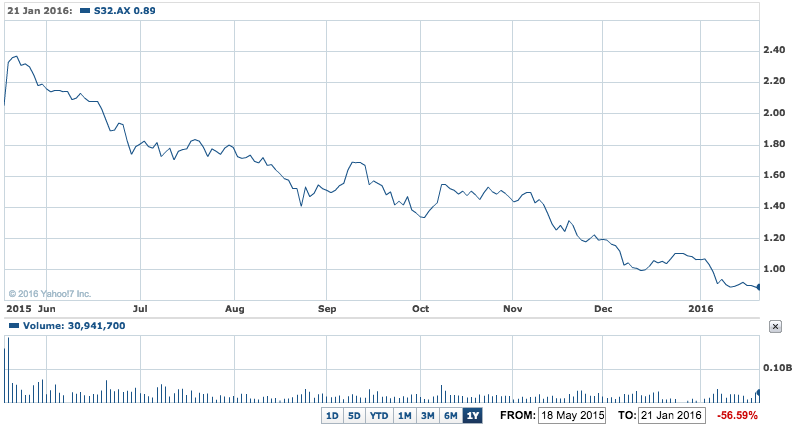Shares in BHP spin-off South32 (S32) were steady at the close on 89 cents yesterday after a tough December quarter and first half production report that contained a bit more optimism than the one from its former parent.
South 32 revealed it had hacked deeply into debt and costs in the December half year, which offset the impact of news of lower production across most of its businesses for the December quarter.
In fact it has salshed debt by close to $US300 million in the past six to seven months, a big achievement.
South32 has already cut or suspended production at high-cost manganese ore mines in South Africa, as well as several aluminium smelters and CEO, Graham Kerr said yesterday the company was ready to do more.
“Further decisive action will be taken as we seek to maximise short-term cash flow while preserving longer-term value.”
The company said its net debt by the end of December stood at just $US115 million ($A166.8 million), down from $US196 million three months earlier, and $US402 million at the end of June.
It also expects to deliver savings of $US30 million, or about 25% per cent in group costs for the June financial year.
S32 – South32 cuts costs across the board

South32, which listed in the first half of 2015 after its demerger from mining giant BHP Billiton, had announced in August it would strip out $US350 million in costs by the end of its 2018 financial year.
The mining group cut production forecast for coal from its Australian operations by 7% to 8.3 million tonnes, after facing difficult mining conditions at some mines. But output targets for most of its other businesses remain in place for this financial year.
Alumina production in the three months to December fell 7%from a year ago to 1.39 million tonnes, thanks to planned maintenance at its Worsley plant in Western Australia.
Aluminium production eased 6% to 241,000 tonnes as the company suspended some production in South Africa on the back of weak market conditions and problems with the increasingly unreliable electricity supply in that country.
Thermal coal output fell 6% to 8.34 million tonnes, while metallurgical coal output slumped by 40% to 1.21 million tonnes on because of geological problems at the Illawarra mine, south of Sydney, which restricted output.
Because of the cutbacks, manganese ore production fell a third to 909,000 tonnes, and alloy production was nearly halved to 66,000 tonnes. Operations at the company’s South African manganese smelter remain suspended due to challenging market conditions, with a strategic review due to be completed by the end of this month.













